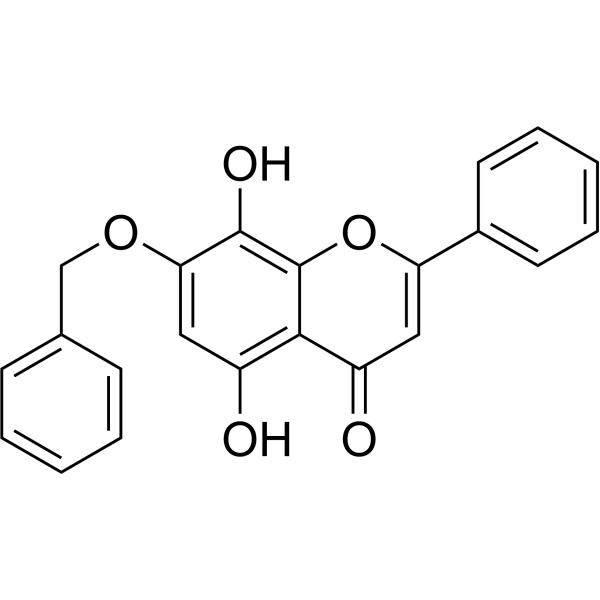
CDK9-IN-10
CAS No. 3542-63-0
CDK9-IN-10( —— )
Catalog No. M26101 CAS No. 3542-63-0
CDK9-IN-10 is a potent CDK9 inhibitor and the ligand for the PROTAC CDK9 degrader-2.
Purity : >98% (HPLC)
 COA
COA
 Datasheet
Datasheet
 HNMR
HNMR
 HPLC
HPLC
 MSDS
MSDS
 Handing Instructions
Handing Instructions
| Size | Price / USD | Stock | Quantity |
| 5MG | 68 | Get Quote |


|
| 10MG | 120 | Get Quote |


|
| 25MG | 255 | Get Quote |


|
| 50MG | 410 | Get Quote |


|
| 100MG | 605 | Get Quote |


|
| 200MG | Get Quote | Get Quote |


|
| 500MG | Get Quote | Get Quote |


|
| 1G | Get Quote | Get Quote |


|
Biological Information
-
Product NameCDK9-IN-10
-
NoteResearch use only, not for human use.
-
Brief DescriptionCDK9-IN-10 is a potent CDK9 inhibitor and the ligand for the PROTAC CDK9 degrader-2.
-
DescriptionCDK9-IN-10 is a potent CDK9 inhibitor and the ligand for the PROTAC CDK9 degrader-2.
-
In Vitro——
-
In Vivo——
-
Synonyms——
-
PathwayAngiogenesis
-
TargetCDK
-
RecptorE3 Ligase Ligand-Linker Conjugate
-
Research Area——
-
Indication——
Chemical Information
-
CAS Number3542-63-0
-
Formula Weight360.365
-
Molecular FormulaC22H16O5
-
Purity>98% (HPLC)
-
SolubilityIn Vitro:?DMSO : ≥ 100 mg/mL (277.50 mM)
-
SMILESOc1cc(OCc2ccccc2)c(O)c2oc(cc(=O)c12)-c1ccccc1
-
Chemical Name——
Shipping & Storage Information
-
Storage(-20℃)
-
ShippingWith Ice Pack
-
Stability≥ 2 years
Reference
1.Chan KH, et al. Impact of Target Warhead and Linkage Vector on Inducing Protein Degradation: Comparison of Bromodomain and Extra-Terminal (BET) Degraders Derived from Triazolodiazepine (JQ1) and Tetrahydroquinoline (I-BET726) BET Inhibitor Scaffolds. J Med Chem. 2018 Jan 25;61(2):504-513.
molnova catalog



related products
-
TBB
TBB(NSC 231634) is a highly selective, ATP/GTP-competitive inhibitor of casein kinase-2 (CK2)with IC50s of 0.9 and 1.6 μM for rat liver and human recombinant CK2 respectively).
-
FN-1501
FN-1501 is a potent FLT3 and CDK inhibitor (IC50s: 2.47, 0.85, 1.96, and 0.28 nM for CDK2/cyclin A, CDK4/cyclin D1, CDK6/cyclin D1 and FLT3, respectively).
-
RO5454291
RO5258638 is a small molecule inhibitor of CDK5-p25 protein-protein interaction with IC50 of 1.39 uM.



 Cart
Cart
 sales@molnova.com
sales@molnova.com


